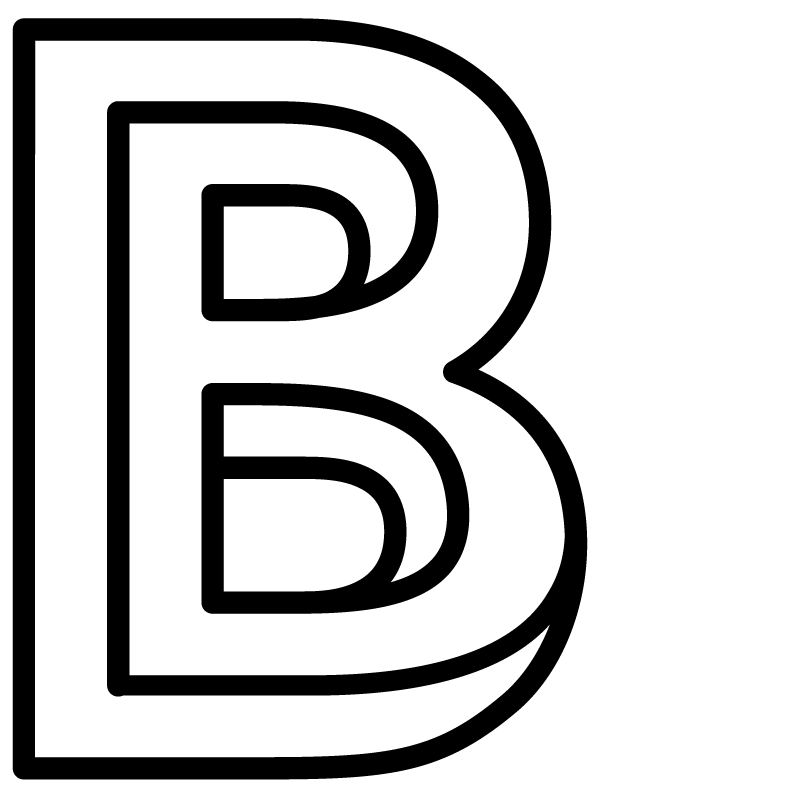The Platonic solids are fundamental 3D structures, where every face, vertex and edge are the same. In Plato’s theory of the universe, the solids each correspond to a classical element, deriving from their geometric properties.
Exhibition
Plato’s Elements centres around the environmental design of five large crystalline sculptures. Rising from the ground, each piece represents the five classical elements, made up of their respective Platonic solids.


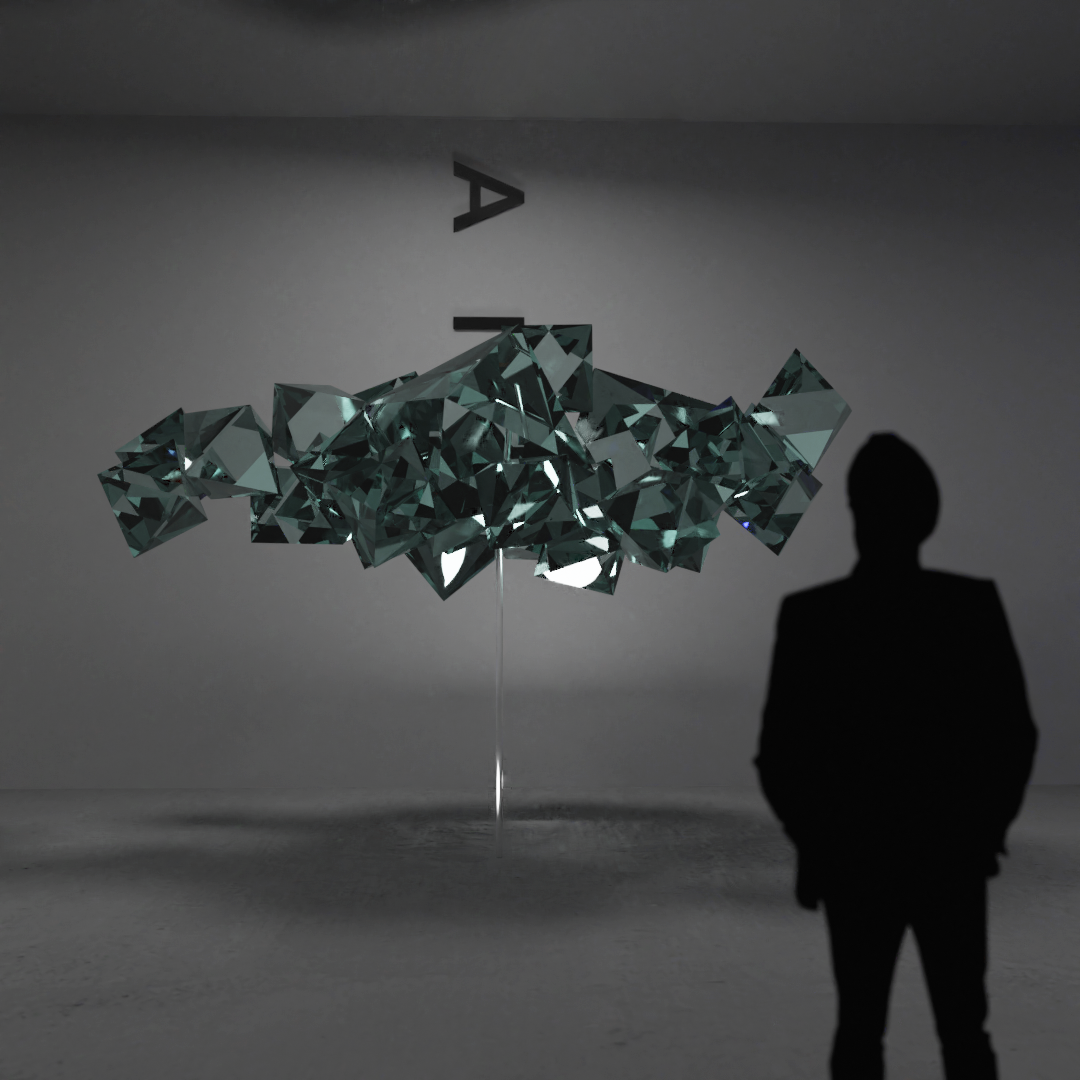
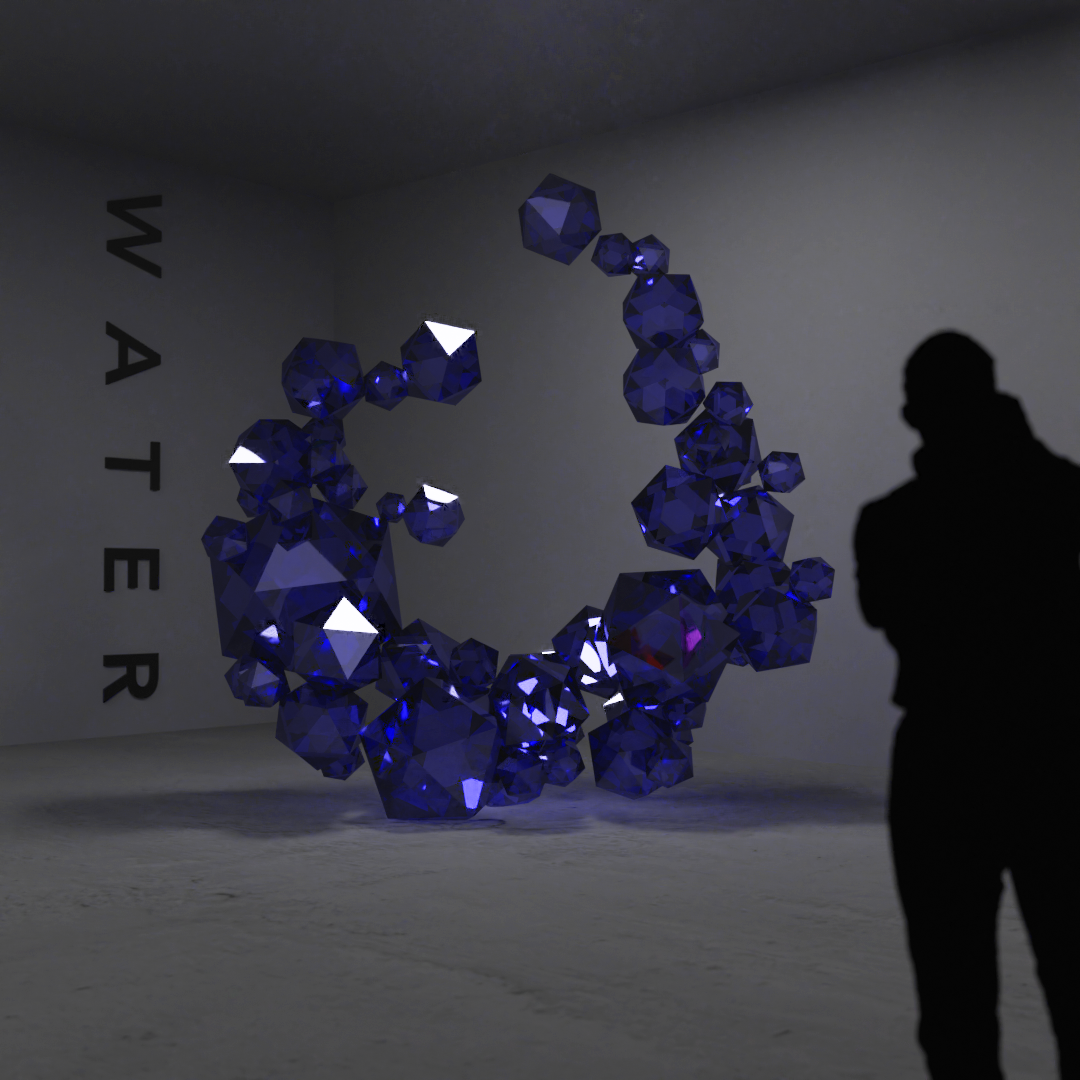


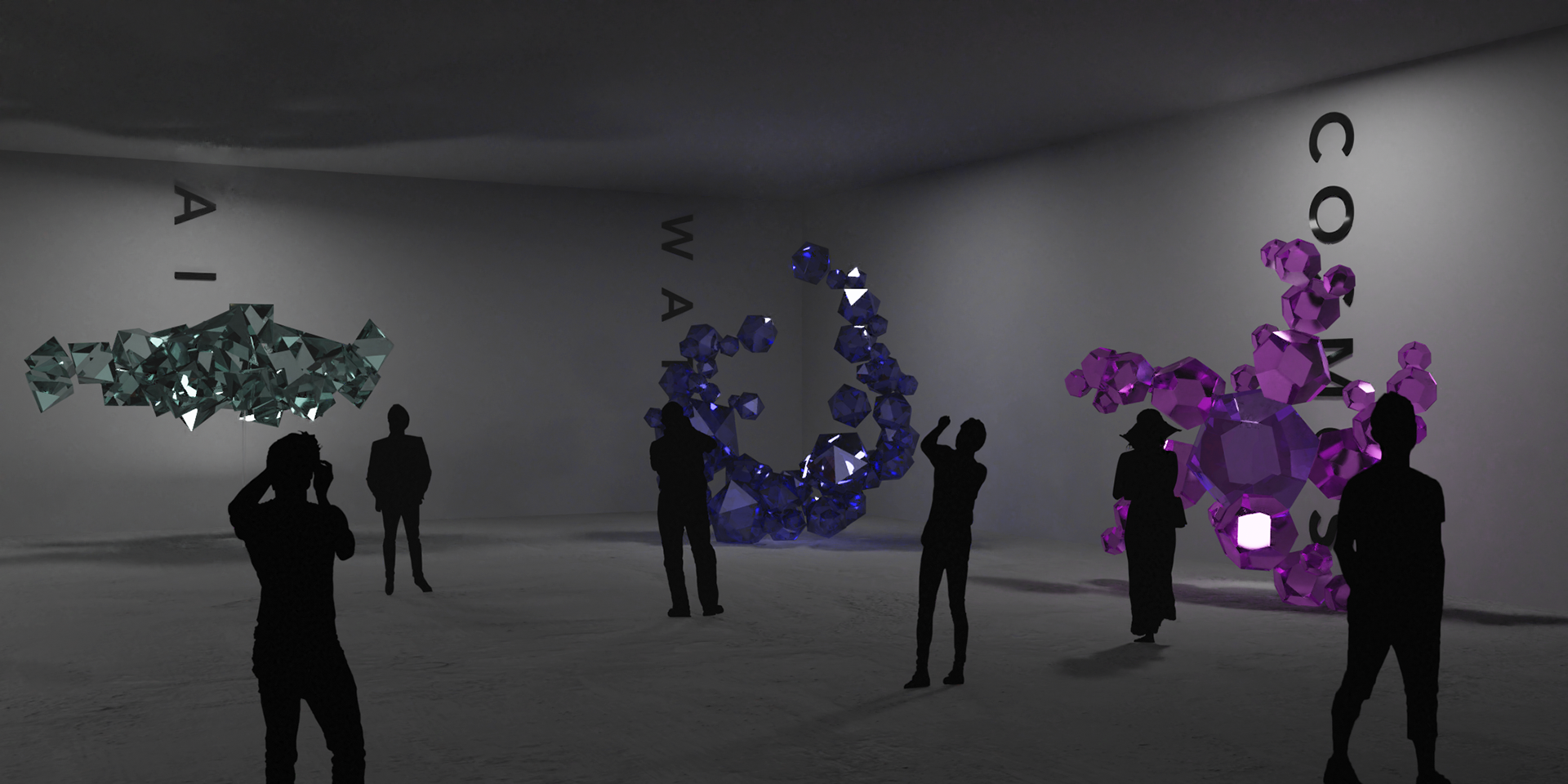
The sculptures have been crafted to capture the elements as if frozen in time. From a fire’s rising embers to a splashing wave, the sculpture designs exemplify the properties of the Platonic solids. The pieces are designed to give the illusion of floating within space, with hidden connections and supports.
Using reflective and refractive materials, the everchanging sculptures invite viewers to interact and explore with the exhibit. The exhibition is kept dark, with bright lights emanating from the structures, further highlighting their kaleidoscopic forms.
Publication
A supplementary piece to the exhibition, this scroll educates readers on key individuals and time points in the history of the Platonic solids and the classical theory of the elements. On the front are the biographies of five foundational Greek figures in both mathematics and philosophy, detailing their contributions to the elemental solids. On the back is a timeline detailing the ancient history of the Platonic solids, from discovery to the proof of these theories.
The design plays on the contrast within the modern understanding of the solids, as both relics of ancient Greece whilst simultaneously modern and futuristic. The predominant record keeping analogue for centuries, a scroll, was a perfect pairing with the timeline and information researched for this publication. Using a rough cream paper stock further reflected the ancient background of the

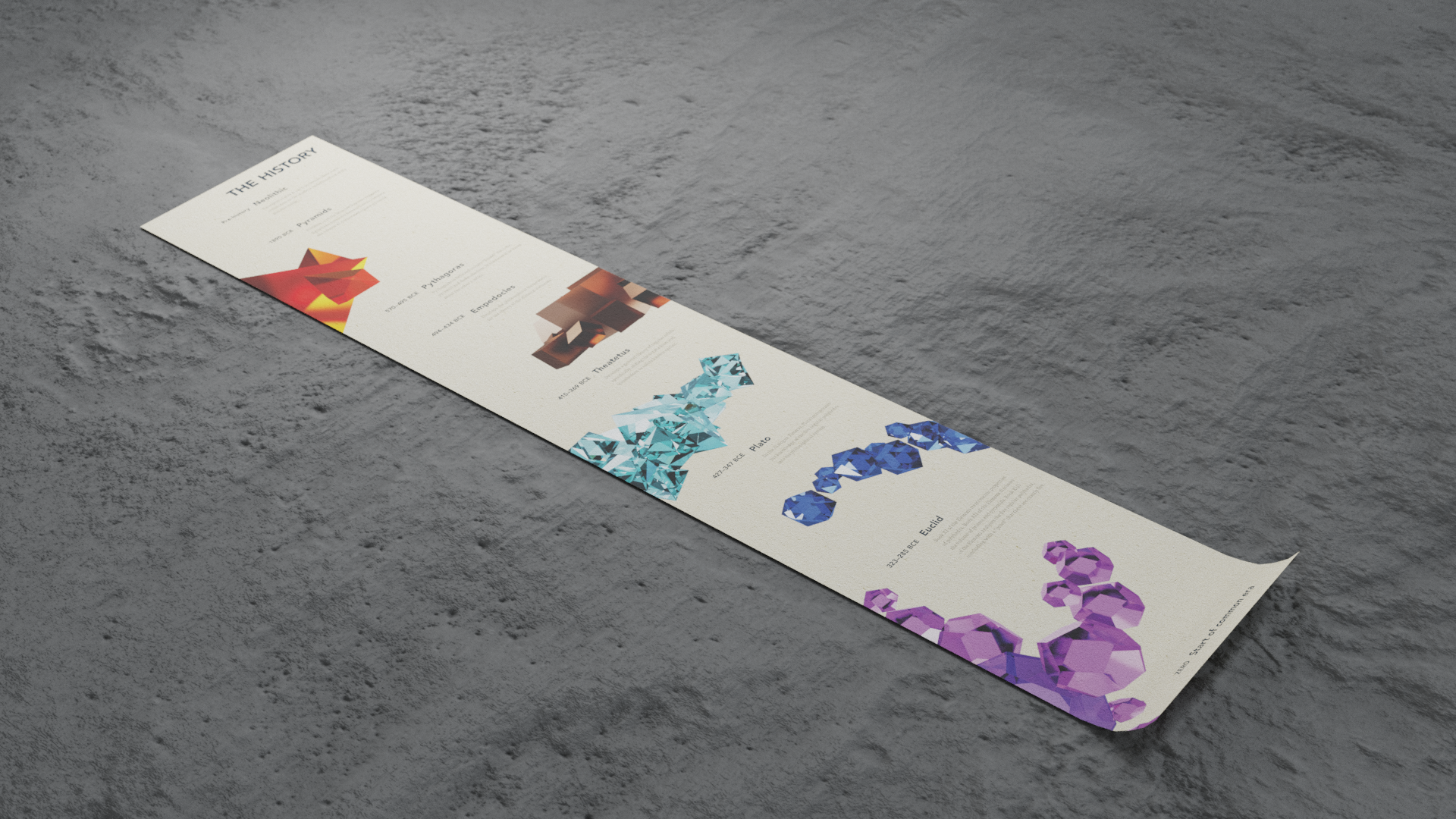
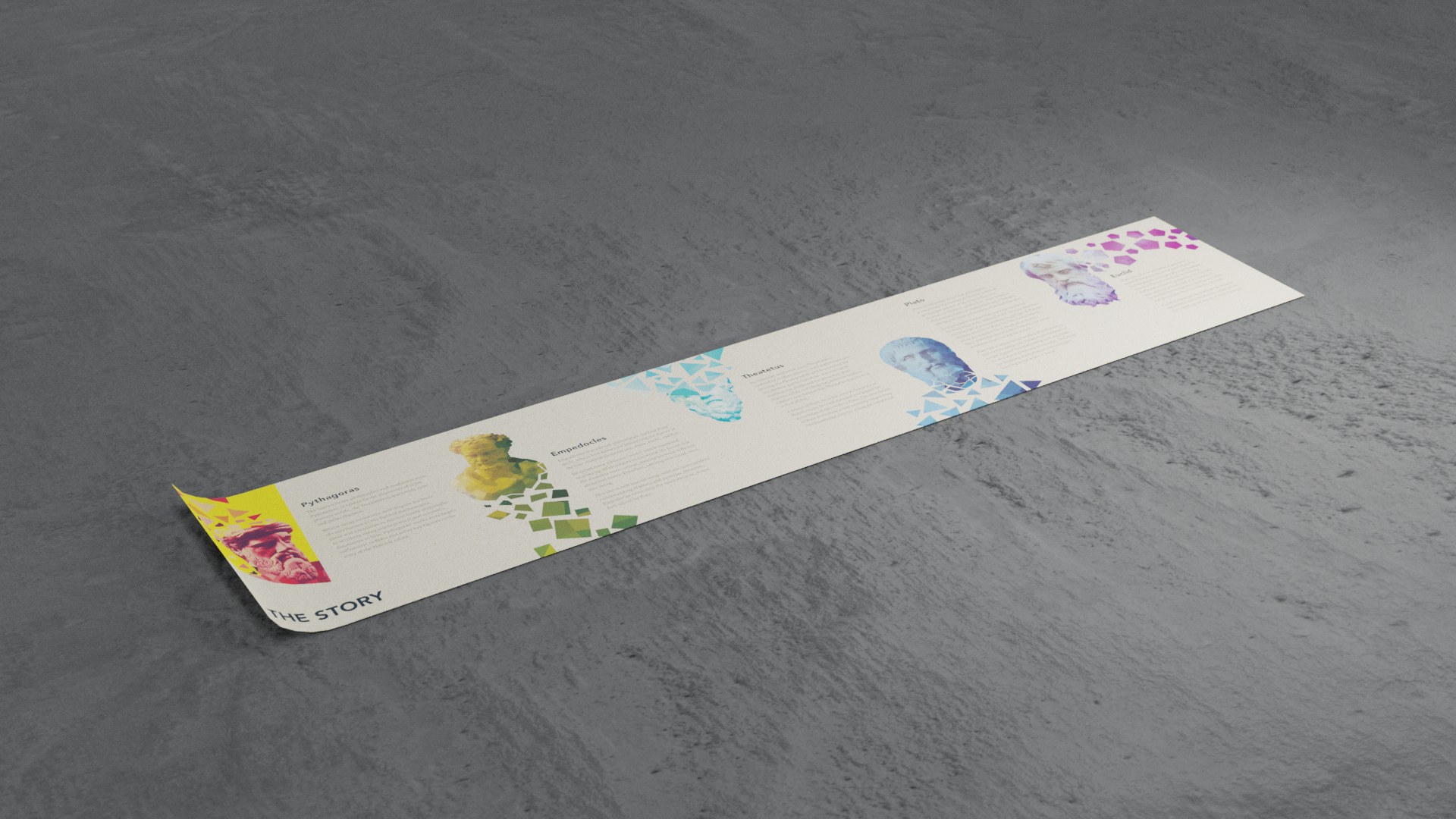
Video
This looping video showcases the mathematical beauty of the platonic solids. The aim was to inspire awe and wonder whilst explaining how the flat shapes and 3D solids are formed. The video is a supplementary piece to the main exhibition, projected on a wall at the start and end of the exhibit.
The flowing forms were achieved through careful planning and storyboarding, to create interlocking and continuous sequences. Each section required different programs and techniques, from working with Blender to create complex 3D shapes, After Effects for animations and video effects, and Illustrator to plan and design the outcomes.
Hidden behind an initially slow pace, the video holds many hidden details, enticing repeated viewing. Just like the Platonic solids, there are many complexities hidden behind these geometric forms.
Video projected onto wall in exhibit
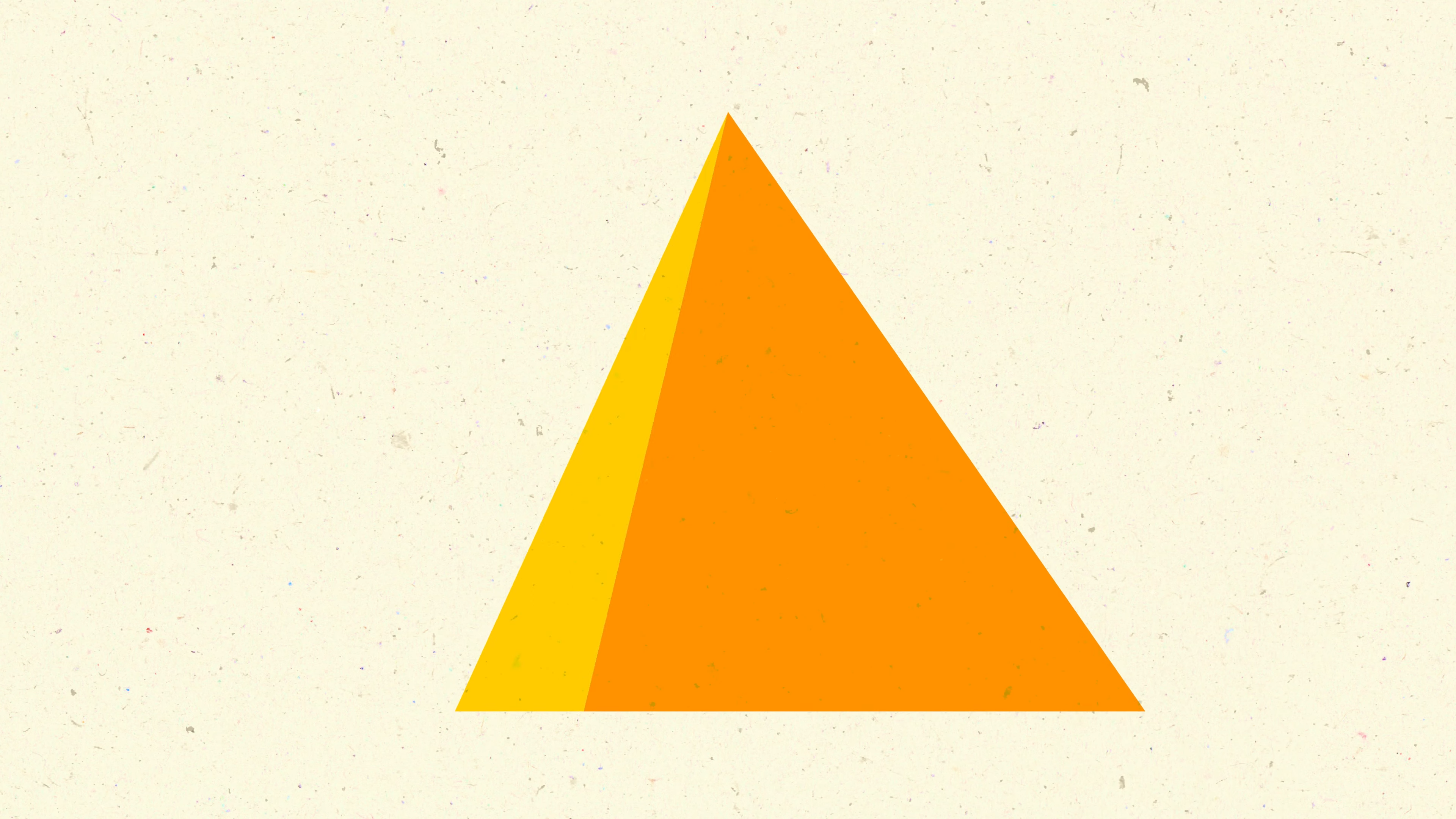


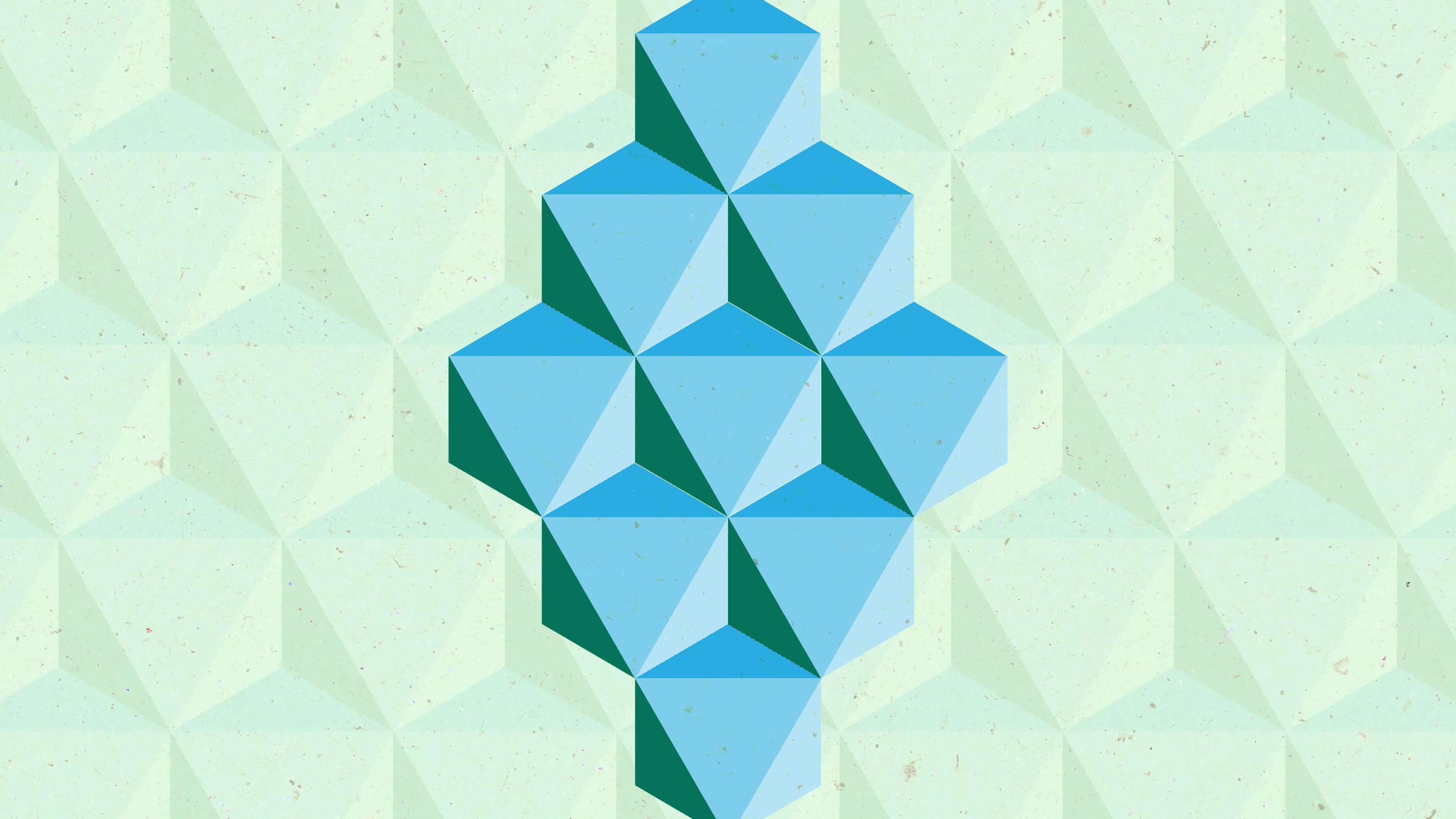

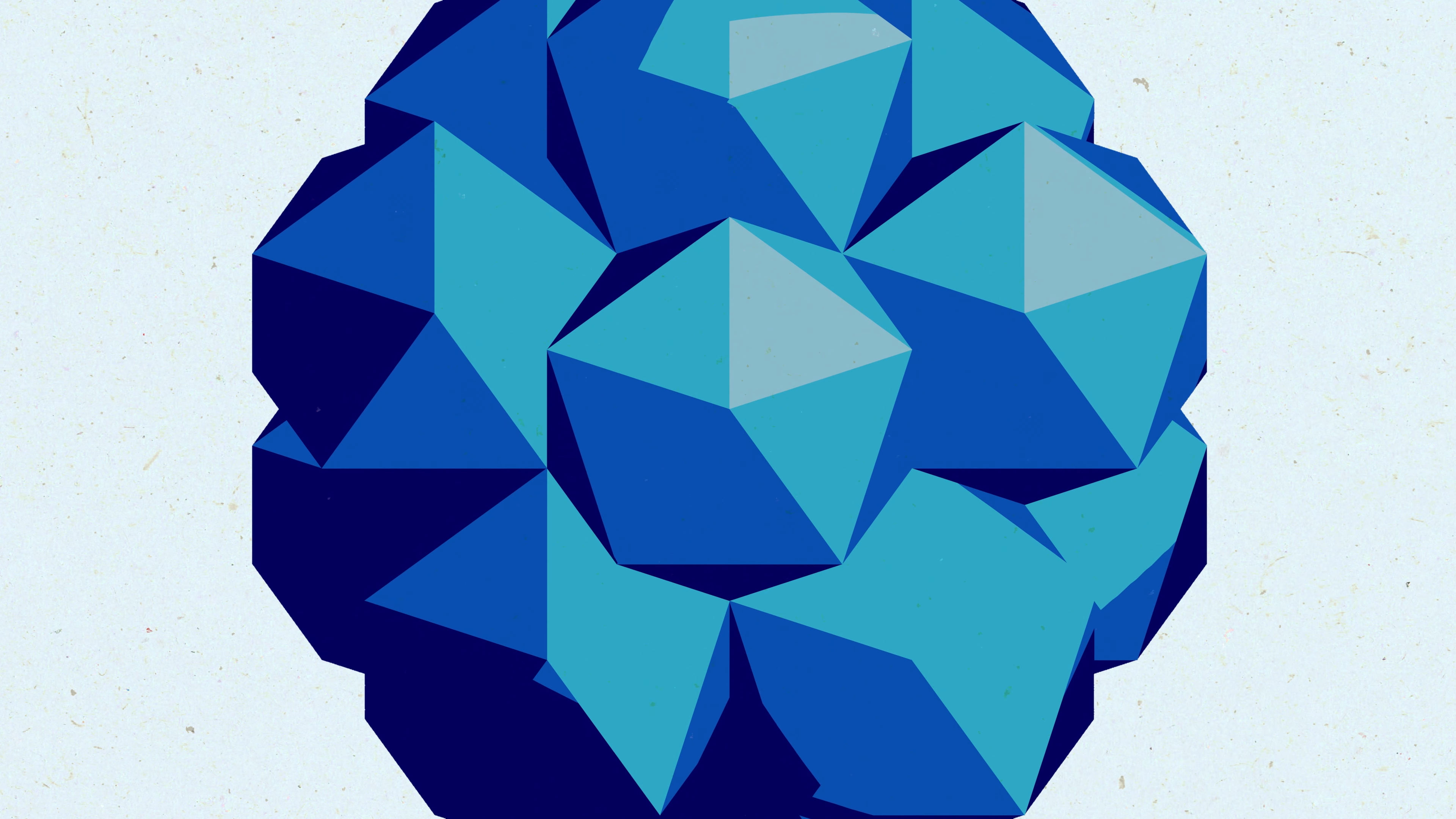
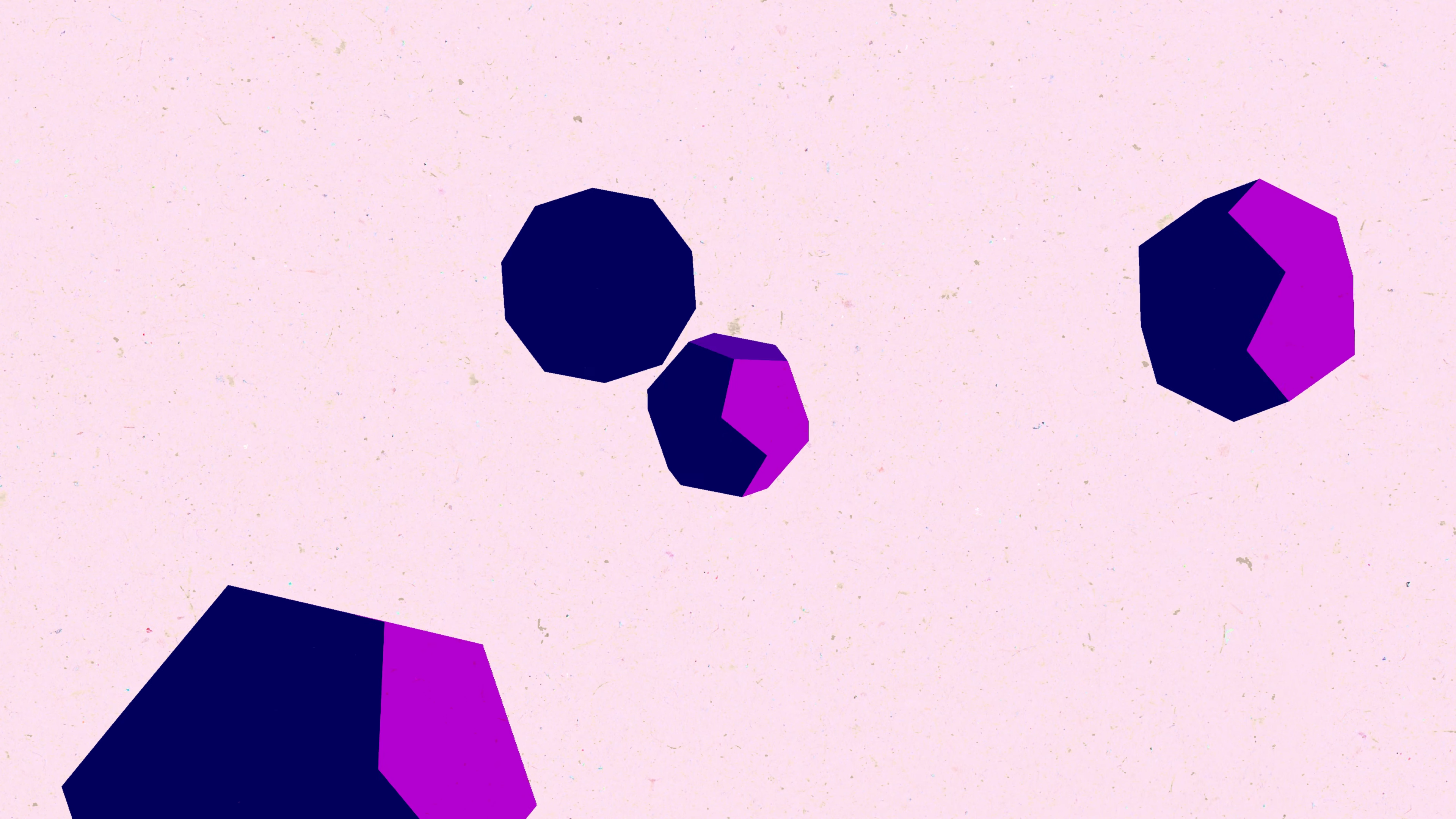
Advertising
In addition to the primary exhibition material, a range of marketing material was produced, with a focus on highlighting the experiential aspects of the exhibit. The aim was to drive interest and engagement to the exhibit. This was achieved by playing with the exhibit’s sculptural forms in posters, with a set of element themed platonic chocolates.
These posters feature cropped in images of the exhibit, highlighting the distinctive design and experience of Plato’s Elements. Designed to be dynamic and distinctive, within these posters is a play between scale, hierarchy, and complexity.
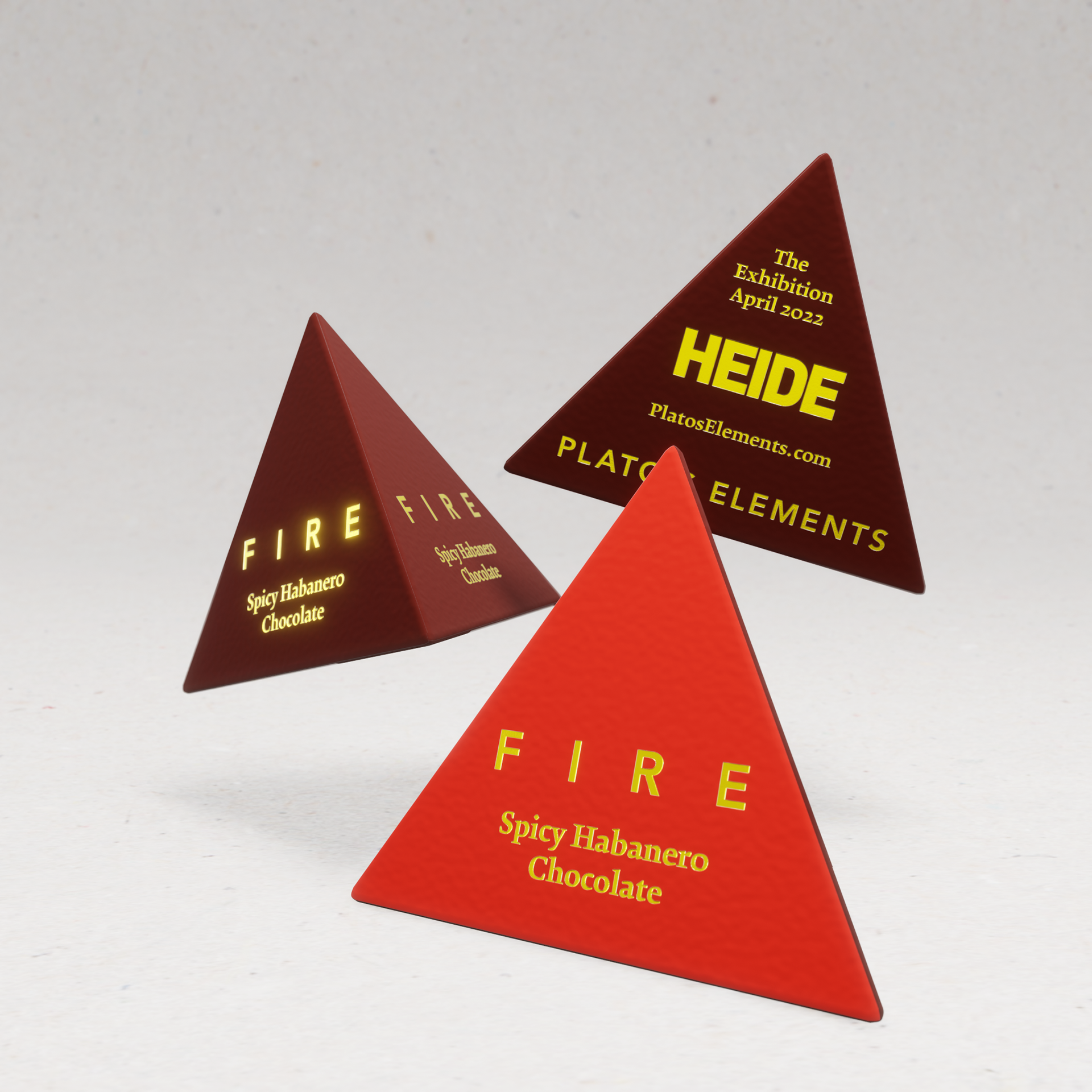
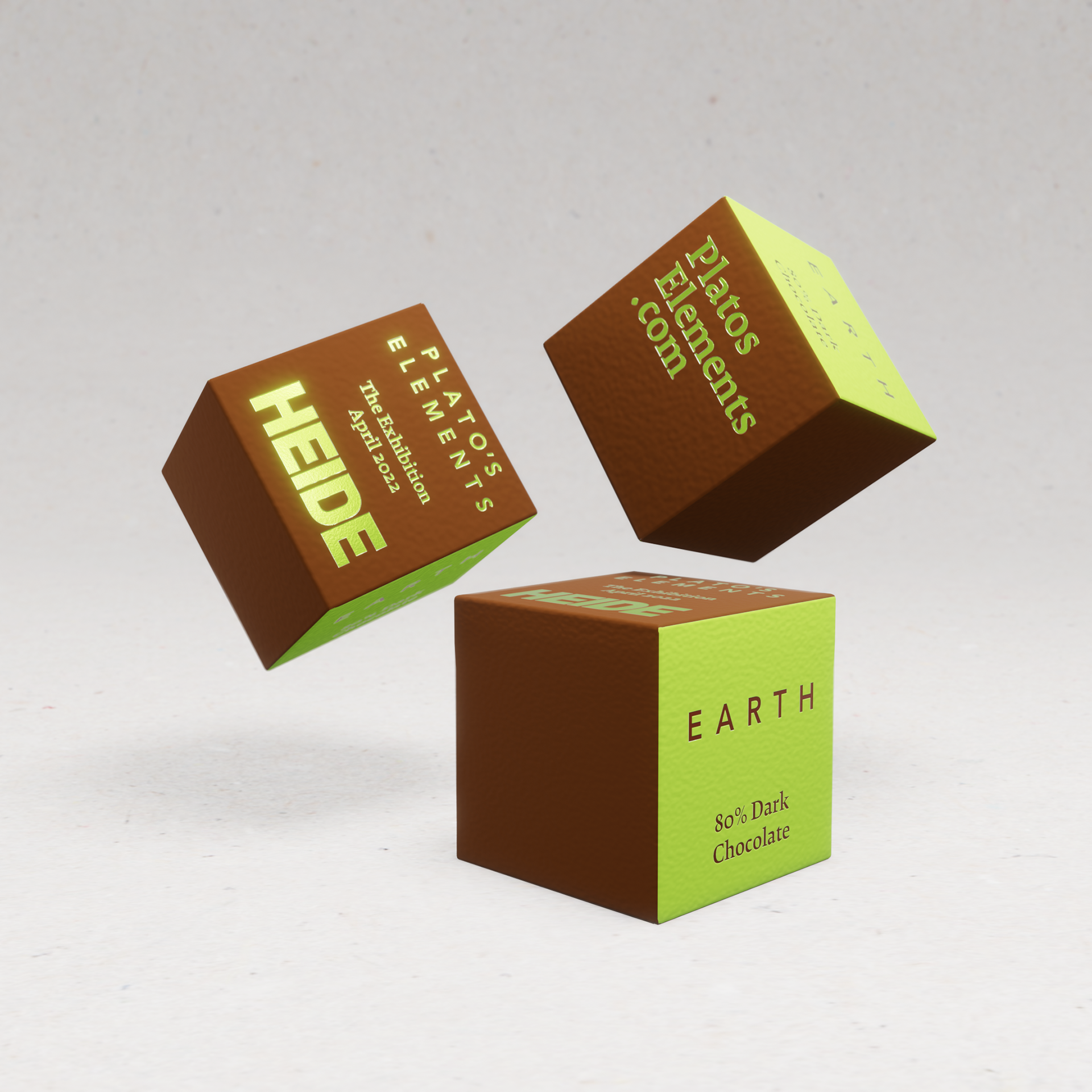

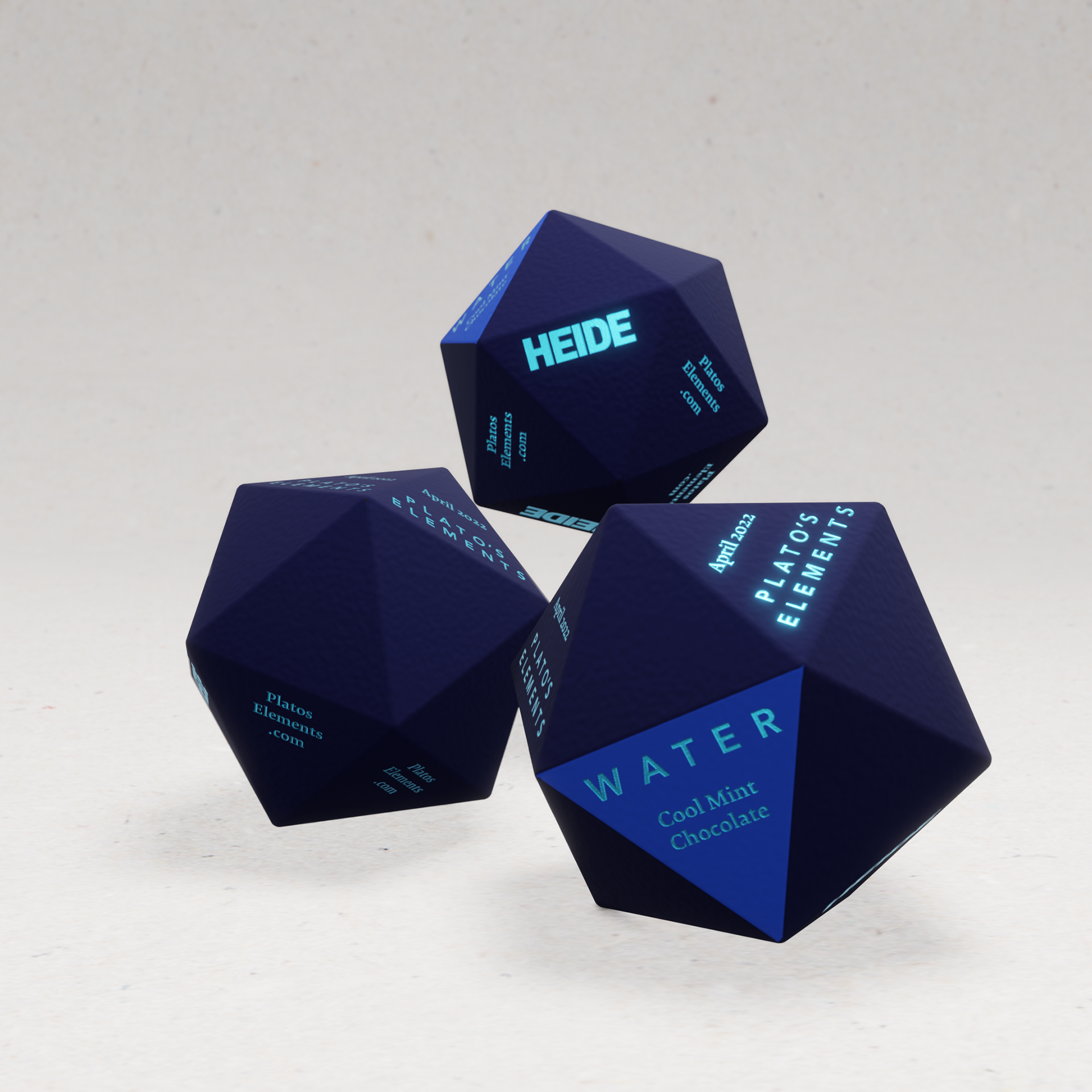
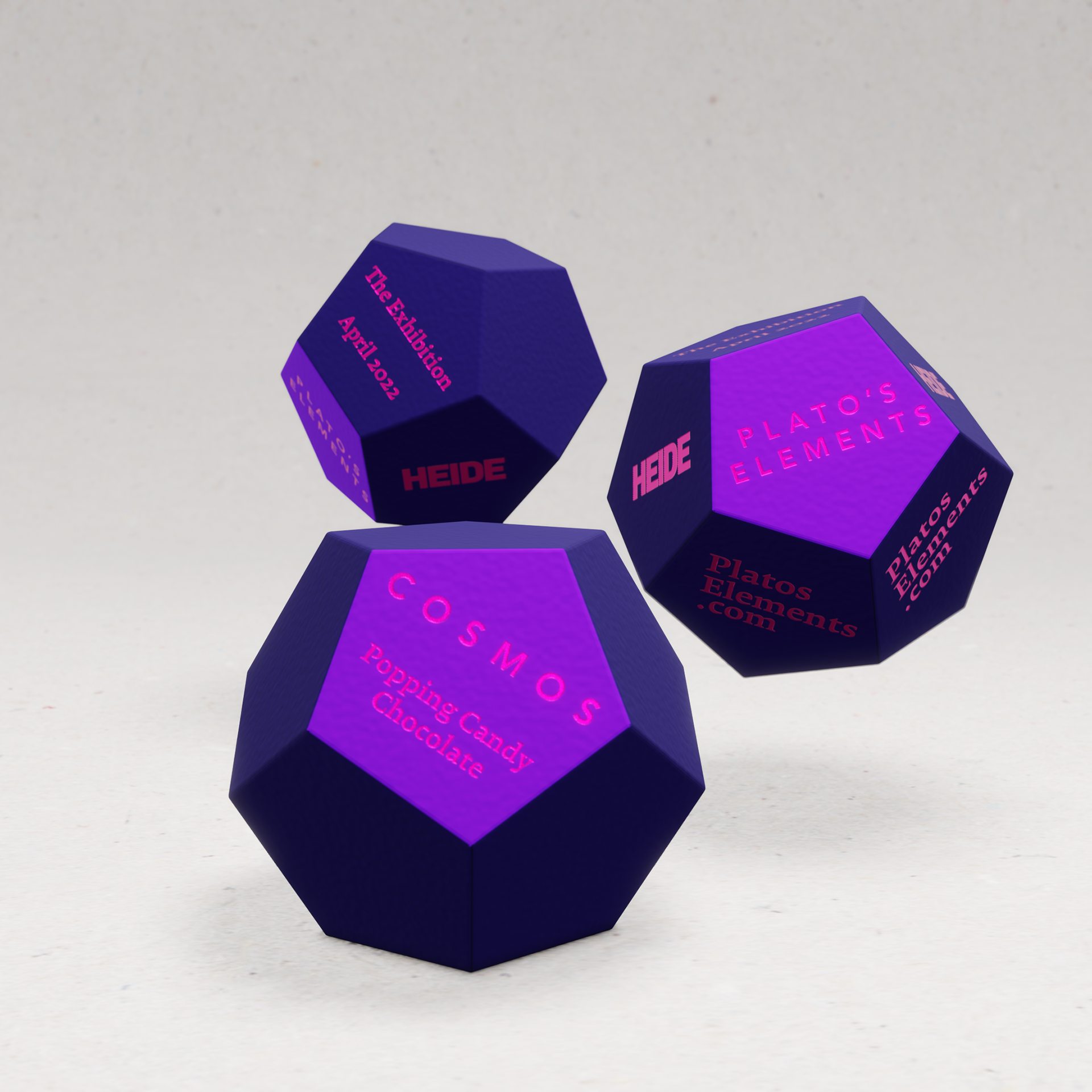
These chocolates each correspond to an element and solids, taking colours, forms and even flavours from them. From spicy tetrahedrons, to bubbly airy octahedrons, anyone grabbing the sweets can quickly grasp the connections found within the exhibit. They are a unique way to market a unique experience to a potential exhibit goer.
